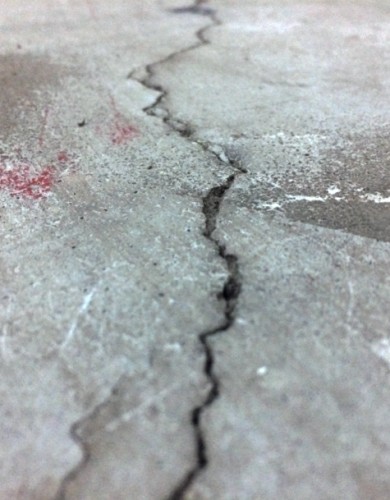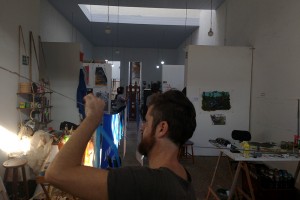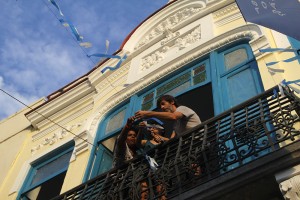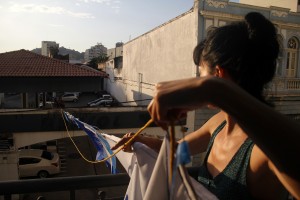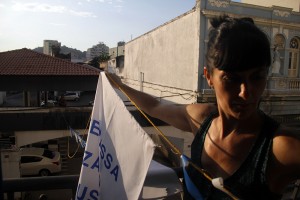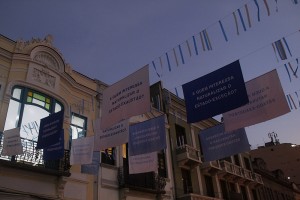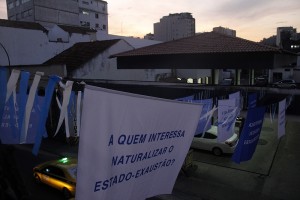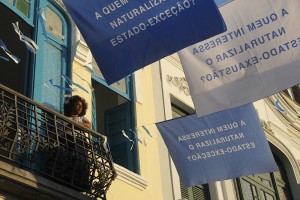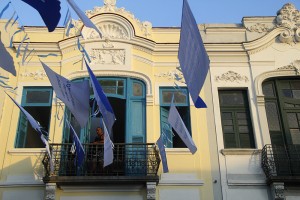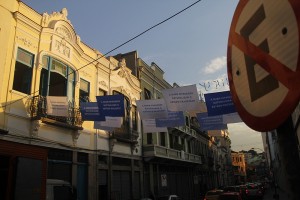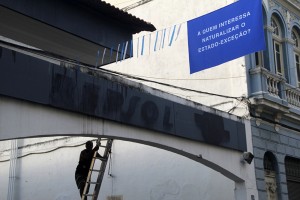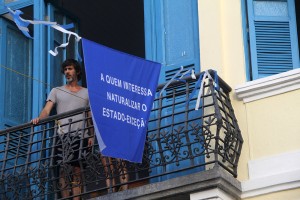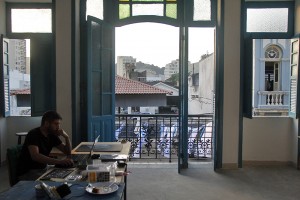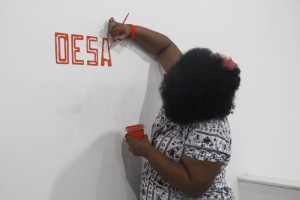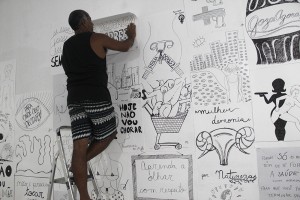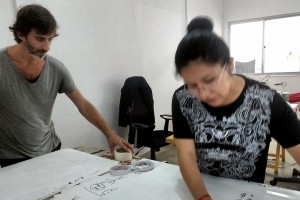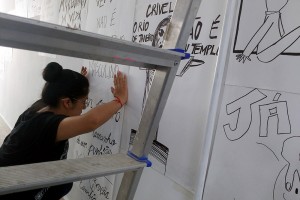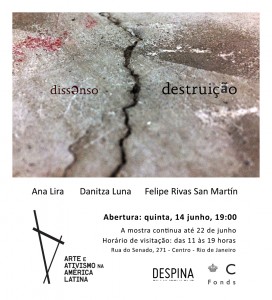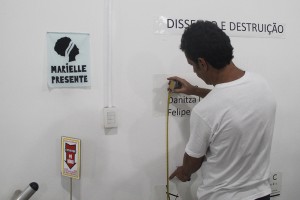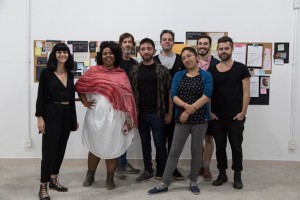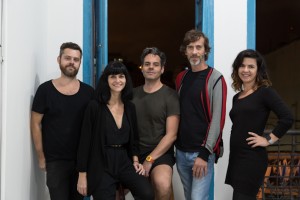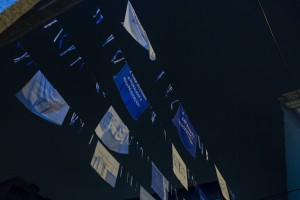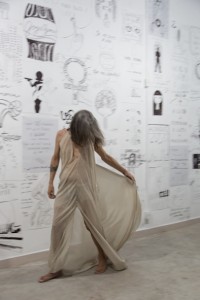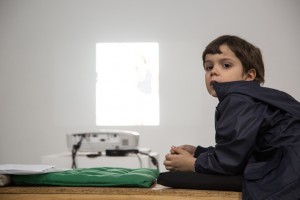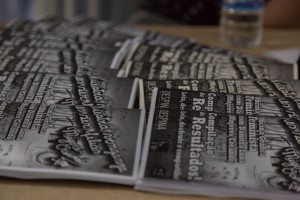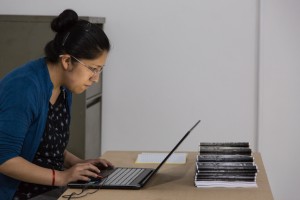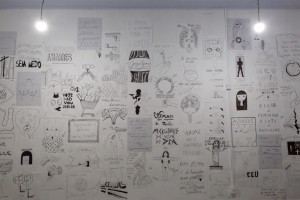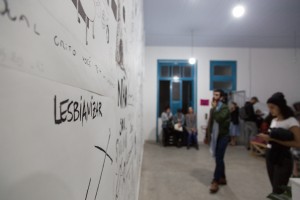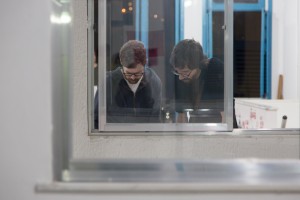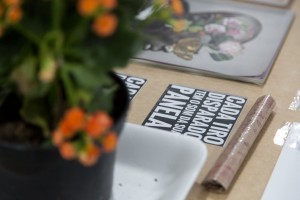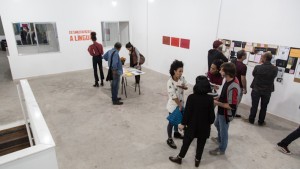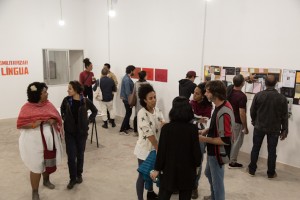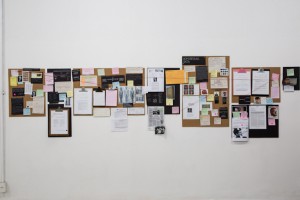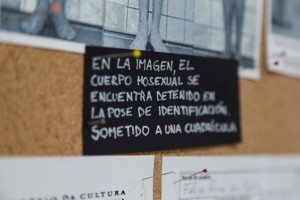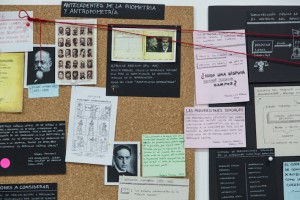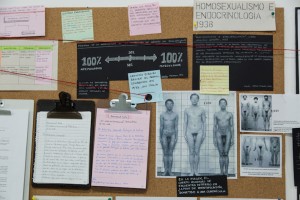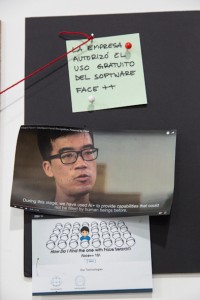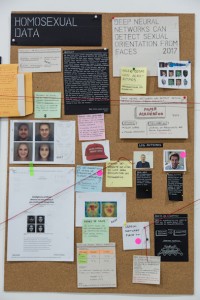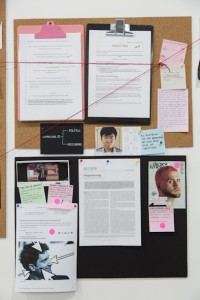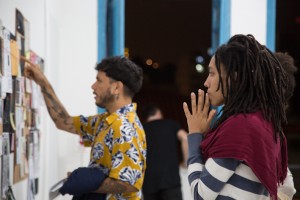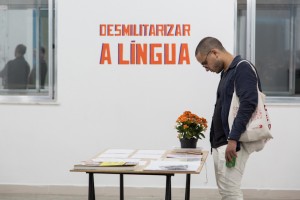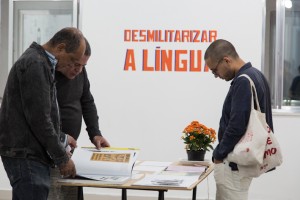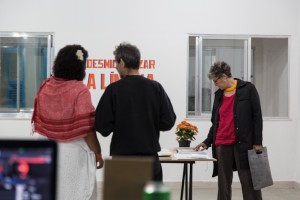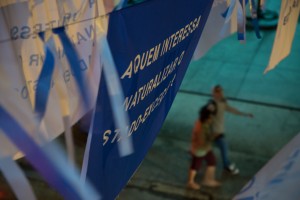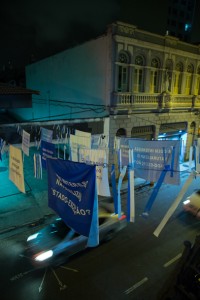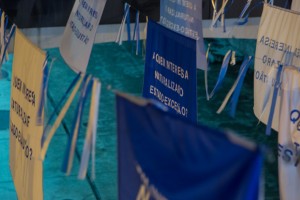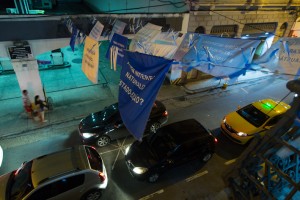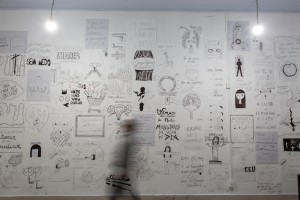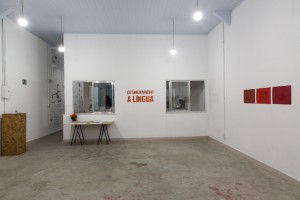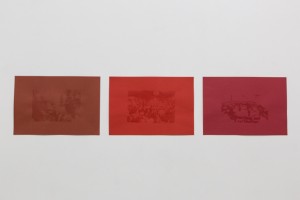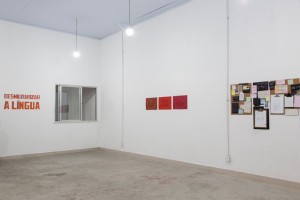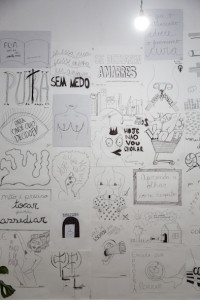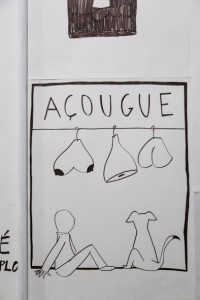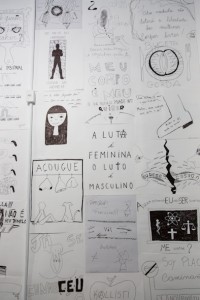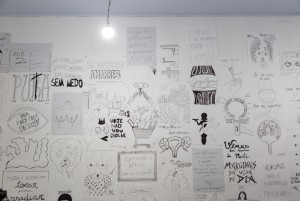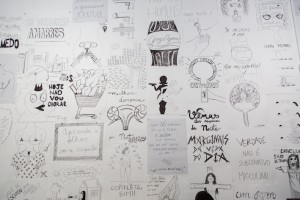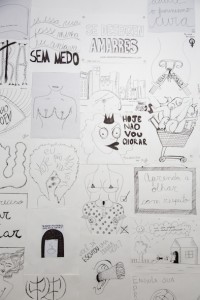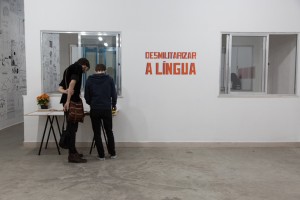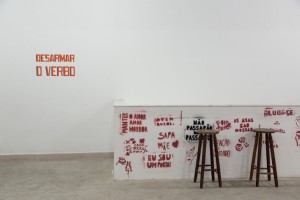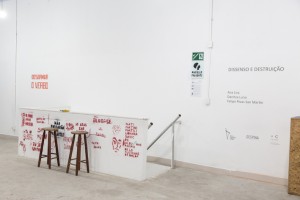Arte e Ativismo na América Latina – ano III (2018)
In this third year of the programme Art and Activism in Latin America, we propose to think action strategies as political tools, able to shake hegemonic discourses, most often seen as unshakable. Practices that originate from discomfort and disagreement zones, emerging in face of urgency to conjoin in the fight against institutionalized violence and social injustice – dissent.
These discontents evolve through aesthetic and political actions of and contestation, articulating the destructuring of dominance through gestures that reconstruct perception, opening up to new forms of political subjectivation – destruction.
In this gathering of latin american artists, it becomes evident how much we share social emergencies, beyond specific contexts, and the abyss between among our neighbour countries, considering the tiny interlocution that we establish between us. We therefore celebrate the encounter of Ana Lira (Brasil), Danitza Luna (Bolívia) and Felipe Rivas San Martín (Chile), made possible in this space and time.
These three artists and activists, whose practices collaborate in the dillution of the frontiers between art and activism, configurate today more than an exhibition, but a web where diverse fronts of articulations entangle – developing network action strategies by means of collective researches.
Ana Lira asks: why do we activate politics mechanisms from a militarized language? The artist, who decides that she will no longer put herself in the target of police during her collective actions, proposes a detachment from belic practices, and the approach to invisibility as a place of articulation. Through collective agencying, flag and billboard productions and street interventions, the artist proposes a reflection on how much verbal demilitarization exercises and the maintenance of caring networks, can establish new means for political action.
The anarchist-feminist bolivian movement Mujeres Creando, here represented by Danitza Luna, proposes the graffiti “Nossa vingança é sermos felizes” (Our revenge is to be happy) as methodology for political activation of the symbolic field. Through a series of meetings with women for creative practices, named “Gráficas Feministas” (Feminist Graphic Press), this process produces confluences between diverse confrontations of chauvinism. The participants – many without prior experience with graphic production – expressed feelings of revolt through drawings and writings which resulted in 75 posters, united in a set of prints shared among the participants, and distributed free of charge.
Meanwhile, Felipe Rivas San Martin presents results of his research “Homosexual Data”, on the construction of the homossexual individual across time and of biommetrical data starting from two ‘studies’. The first, from 1938, would identify homossexuals (frequenters of the Tiradentes Square, at Centro da Cidade of Rio de Janeiro) from the triangular form of it’s pubian hair cluster, and the other, from 2017, via algorythms of facial recognition. Eighty years span and in this archive revision of past and present, the chilean artist reports the persistent outline and control of the homossexual body, inviting us to create our own (transviated) archive.
What is configurated here, through the convergence of these multiple discursive practices, is a platform that invites other views and voices to action and conversation, in search of sharing paths of convergence and dissonance that our diverse experiences have in common.
Guilherme Altmayer
curator
***
To learn more about the artists and Art and Activim in Latin America – year III, click here.
***
PICTURES GALLERY (horizontal scrolling)
Photos: Denise Adams e Frederico Pellachin
